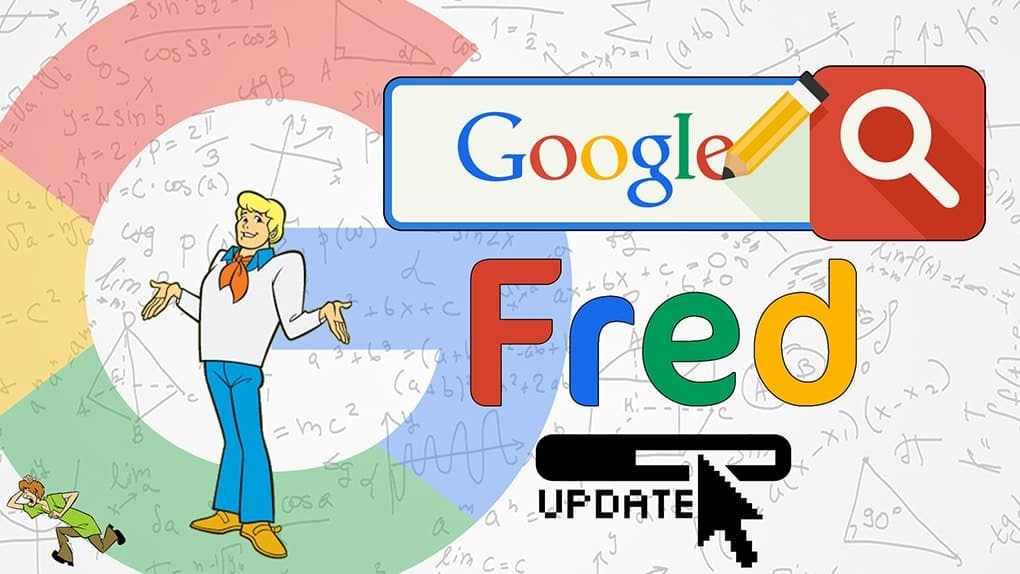It was March the 8th when website owners suddenly noticed plenty of movement with rankings and traffic. We thought that it would be appropriate to visit this topic as many are still looking for answers nearly three months later. Thus, this article looks over what the update was about and some tips to incorporate into your website and marketing strategy. Let’s continue.
Anyone with a website will have a love/hate relationship with Google and its algorithms. Capable of delivering spectacular returns for those that get it right, staying up to date with what Google demands is a mammoth task just on its own.
Since 2000 Google has been constantly streamlining and revising its algorithms, a move that has kept every site owner on high alert. The introduction of Panda in 2011 was a giant change, with many forced to make wholesale changes to avoid sweeping penalties.
Fred is the latest Google update, a joke name attributed by the tech company’s Gary Illyes. However, despite the comedy moniker, if you’re concerned about keeping your site at the top of the rankings there’s not too much to laugh about with Fred. Here’s the facts that you need to know.
What exactly is Fred?
First released on 8th March 2017, Fred is the latest change to Google algorithms and it’s one that’s seen a number of sites plunge in the search engine rankings. Closely linked to Penguin, it seems that Fred is homing in on the sites which have lots of adverts and penalising them accordingly. So, position ads in user-friendly positions, and don’t have too many.
If you’ve got a site which is primarily to drive revenue and is ad-heavy, you’ll have been seriously affected by Fred. These are the types of sites that the latest Google update is targeting and penalising in the rankings. Too many affiliate links, adverts that make it difficult for users to navigate your site and a particularly high percentage of adverts, particularly in a prominent position are the types of flags that Fred is looking out for.
With this latest update, Google is putting the emphasis firmly on quality content and if your site fails on this single factor, you’ll be hit hard. Google wants the high ranking sites to have been created specifically for a human audience, rather than solely designed to score well on the algorithms (nothing new here). This means if you’ve just filled your site with what you think will rank top on Google and also bring in revenue rather than thinking about what your customer actually wants, there’s a good chance you’ll be in trouble with Fred.
How to avoid being penalised by Fred
Not all sites that have been affected by the Fred update are shams or aggressively monetising, but it only takes a couple of bad decisions for Google to dismiss you as irrelevant. The good news that that you can take some pretty simple steps to avoid the Fred factor.
Without question the single most important aspect is quality. Google wants to see content and design which is well thought out, adds value and is of genuine use to the audience. Creating a blog purely to add backlinks or for SEO services is no longer sufficient to score you big points and conversely, you’ll now be penalised for having this.
What you need is a blog or other content which shows that there’s expertise and skill that’s been expended in the creation, together with a well-crafted site that is geared towards users not adverts. The page should be well maintained with no faulty links, and a layout which loads easily and without errors. It should also be easy for anyone to immediately see what the website is about and also who owns it.
You can earn extra brownie points for having high quality backlinks, positive feedback in user reviews, industry recognition or awards and expert testimonials.
If your site contains adverts you might need to have a serious re-think about how many you have, and their placement on the site. The Fred update doesn’t mean that you can’t have any ads or affiliate links but they shouldn’t be of primary importance.
Right said Fred….
The attributes that Fred is looking out for shouldn’t really come as much of a surprise as Google has been focusing on quality content of real value for some time. This latest update just intensifies the need to keep ads relevant and to a minimum while delivering information to the internet audience which is meaningful, relevant and up to date.


